Copyright 2020 - 2021 irantour.tours all right reserved
Designed by Behsazanhost
Iran Forests, Ancient but living
Iran Forests, Ancient but living
Less than 2 percent of Iran is covered by forests, while another 8 to 9 percent may be regarded as depleted former forest areas. Altogether, 150-160,000 km2 are, or have been densely forested areas. Plentiful rainfall, a mild climate, and a long growing season have combined to create a dense forest of high-quality timber in the Caspian region. There is extensive growth of temperate-zone hardwoods, including oak, beech, maple, Siberian elm, ash, walnut, ironwood, alder, basswood, and fig. About half of the Caspian forests consist of these trees; the remainder is low-grade scrub. The Zagros Mountains in the west and areas in Khorasan and Fars provinces abound in oak, walnut, and maple trees. Shiraz is renowned for its cypresses. More than 2,000 plant species are grown in Iran. The land covered by Iran's natural flora is four times that of Europe's.
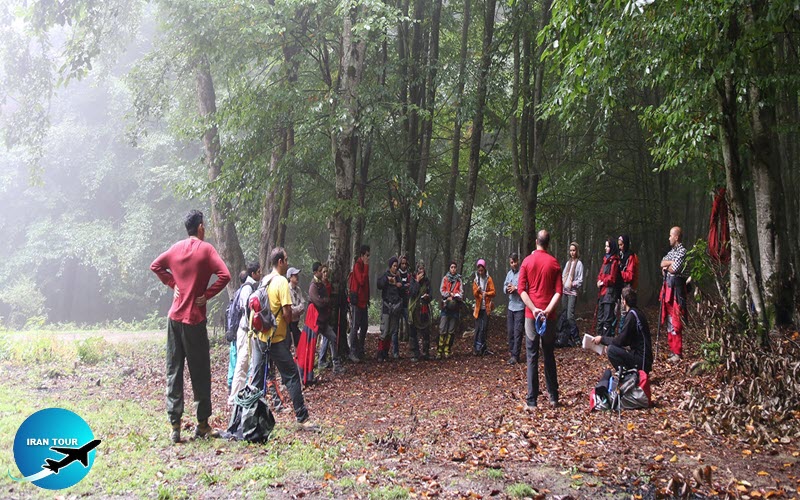 |
Nature of Iranian Forests
Living In Nature Iran
The Iranian forests belong to the European Siberian growth region in the Holarctic. This region includes parts of Europe and Northern Asia. The climate varies from cold to moderately warm weather. From the flora perspective, this region could be divided into the sub-regions of Northern, Atlantic, Central Europe, and Pontic. The Pontic sub-region in the Middle East is represented by Accino-Hircnal Province. This sub-region Includes northern Turkey's mountains, the northern slopes of the Alborz mountains, and the coastal areas in its vicinity. This is well adapted for the growth and expansion of forests and its annual rainfall is more than 1,000 mm. A part of this region enjoys summer rainfall as well. The flora of this region consists of 40% European Siberian species, 2296 Mediterranean-European Siberian, and 8% Iranian-Turanian. One of the most notable features of this region Is its suitable environment for those groups of flora that were in danger in Europe at the expansion phase of cold weather in the later years of the Third Period (Newgeon Period). This grouping of flora expanded rapidly in this region and became part of the endemic species. There are other sub-provinces called the Hyrcanica that has less richness but still enjoy a variety of tree species. It is divided into three groups. One of these groups is the Alnetea Hyrcania, which includes various species like the forests of the Caspian coastal area.
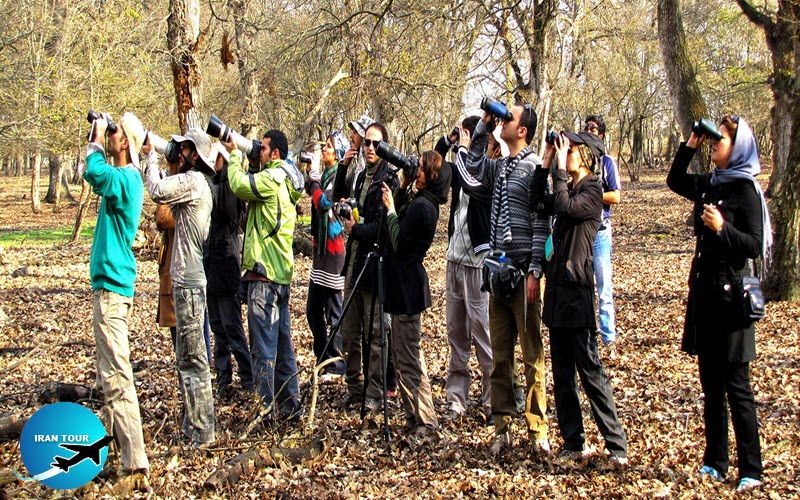 |
Iranian forests can be categorized ecologically as consisting of the following biomes:
1. Caspian broadleaf deciduous forests
2. Arasbaranian forests
3. Zagrosian forests
The important species of trees in commercially usable forests are:
Beech Fagus Orientalis
Hornbeam Carpinus betulus
Oak Quercus castanelfolla
Alder Alnus subcordata
Maple Acer velutinum
Linden Tilia caucasica
Persian Iron wood (Parrotia persica)
Forest Distribution and Specifications
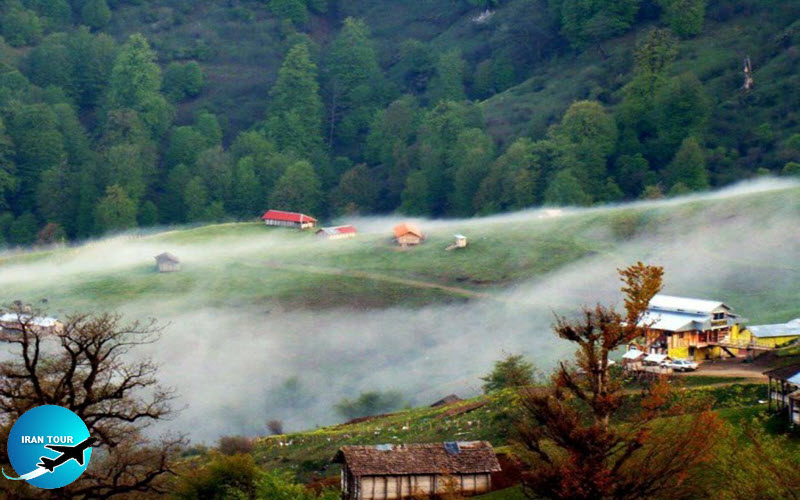 |
Golestan Province
Gorgan-Iran The entirety of the southern and southwestern areas as well as parts of the eastern regions of the Gorgan plain Is covered with forest, totaling an area of 421,373 ha In 1998. There are three forest parks totaling 1,224 ha and there is 2,930 ha of artificial forests. The total production from these forests is estimated at 269,022 cubic meters.
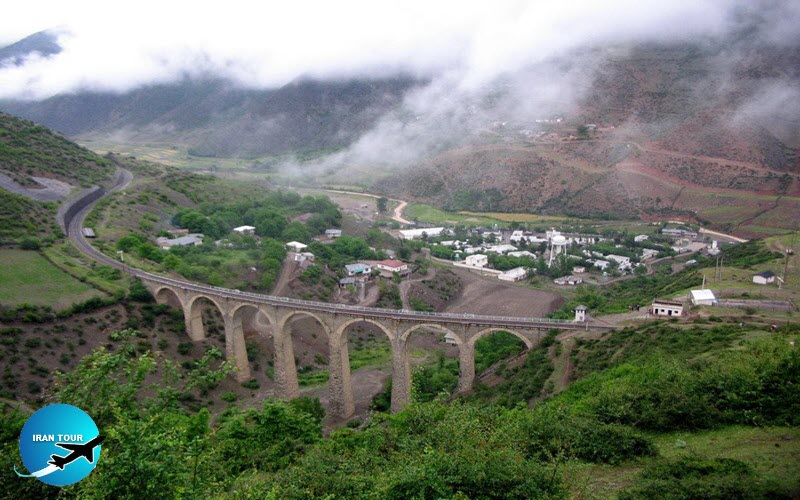 |
| Rail Road Tehran - Mazandaran Province |
Mazandaran Province
Forests of Mazandaran Iran
The total area of the forest in this province is estimated at 965,000 ha which is mainly comprised of broadleaf trees. The forests in the eastern part of the province are connected to the Minoodasht and Golestan forests and are distributed in two major regions, Sari (645,000 ha) and Nowshahr (320,000 ha). From these forests, 487,195 ha are used commercially, 184,000 ha are protected and the rest are regarded as forest lands or overused forests. There are 11 forest parks totaling an area of 5,494 ha and 29,877 ha of artificial forests.
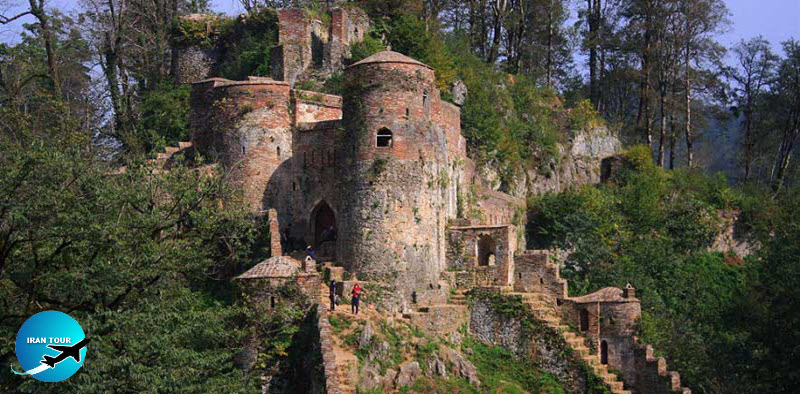 |
-Guilan Province
Forests Gilan-IranThere were 567,524ha of forests in Guilan province In 1998 out of which, the Astara area with about 80,000 ha ranks first In the region. These forests are graded 1-2-3 with an area of 107,894; 182,758 and 211,972 ha respectively. The area of artificial forests in 1998 was estimated at 1,062 ha, there are also 16 forest parks totaling 5,391 ha, and 5 forest biospheres totaling 2,373 ha. The commercial and non-commercial utilization Is 310,375 cubic meters (184,202 cubic meters for commercial and 126,173 cubic meters for non-commercial use).
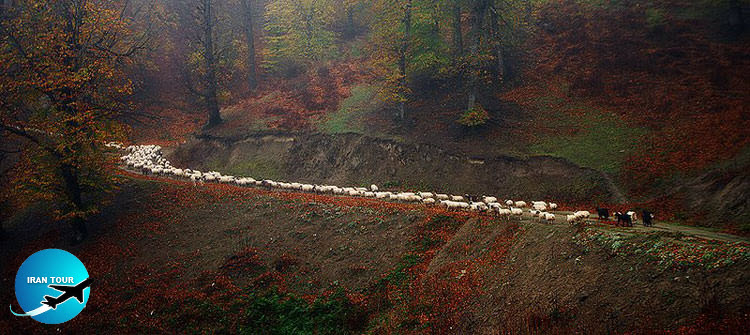 |
Zagrosian Forest
Iranian Quercus brantii Forest Also described as Zagrostan Forest after the Zagros Mountains, these forests characterize much of the southern Armenian, Kurdistanlan, and Zagrosian sectors of Iran. They require fairly regular summer precipitation, which usually comes in the form of thunderstorms. Their upper altitudinal limit is about 2000 m and extends down to 700 m in northwestern Kurdistan. In Places Quercus brantll is Joined by other oak species such as Q. bolsseri, Q. Iberica and Q. Infectoria, while other characteristic trees and shrubs Include Acer cinerascens, Amclanchier Integrifolia, Amygdalus communis, Berberis Integerrima, Celtis tournefortil, Cerasus microcarpa, Crataegus azarolus, Daphne angustifolia, Fontanesla phyllireoides, Fraxinus oxyphylla, Juniper oxycedrus, Lonicera nummularlaefolia, Pyrus syriaca, Rhamnus kurdica, Sorbus Integrifolia and several endemic or near endemic taxa such as Amygdalus elaeagnifolia, Pyrus glabra (Roseaceae) and Fraxinus rotundifolia subsp. persica (Oleaceae). These forests are rich in fruit trees and possibly represent the original vegetation of the Garden of Eden which certain scholars belleve really existed.
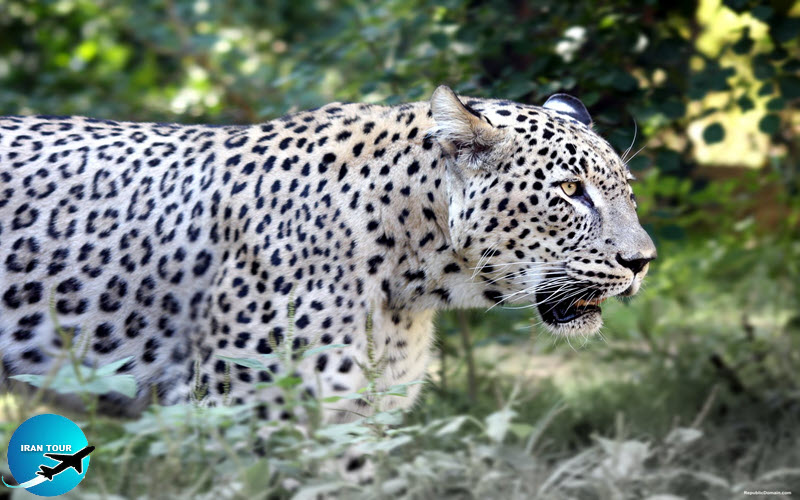 |
Current Condition
Mazandaran Iran
According to an estimate made by the Forest and Range Lands Organization, the total area of the Caspian forest In 1963 was 3,420,487 ha. In 1980, a new Inventory was made which estimated the total forest area at 1,900,000 ha. During the last 13 years, there has been a continuing degradation of forest area, so much so that today the total area of the Caspian forest is approximately 1,800,000 hectares. If the areas that receive more than 500 mm of precipitation were considered forests, the total area would be about 3,600,000 ha. In addition to dimensional degradation, the forest's standing crop or biomass is also being destroyed. Before destructive exploitation, the average biomass of the Caspian forest was about 300 tons per ha. Today the average Is less than 100 tons per ha. In altitudes lower than 600 meters, the areas have been almost completely cleared of valuable timber. The situation is similar in high altitudes where the inhabitants of subalpine pastoral areas have devastated the sub-alpine forests by selective removal and later by complete removal of vegetative.
- Details
- Category: Where to go in IRAN